10 Giant Menorahs That Will Light Up for Hanukkah in NYC
From Brooklyn to the Bronx, we’ve rounded up the most exciting giant menorahs that will light up throughout the next eight evenings!


Perhaps one of Brooklyn’s least-visited neighborhoods, Red Hook is a peninsula in northwestern Brooklyn. Red Hook played a major role in the American Revolution and was a large industrial site before its decline and revitalization in the 1900s and 2000s. Red Hook has seen rapid development recently with the 2008 opening of a controversial IKEA. Today, unique food destinations including Red Hook Winery, Widow Jane Distillery, Steve’s Key Lime Pies, and Red Hook Lobster Pound are popular options, many in old warehouses or Civil War-era buildings. From robotic art studios to abandoned trolleys to a museum on a barge, here are 10 secrets about Red Hook.
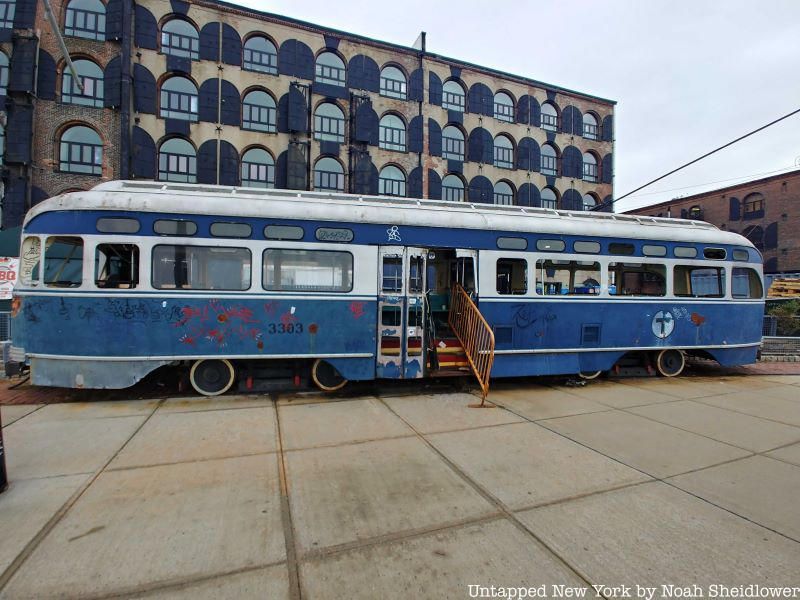
On the Red Hook waterfront behind Beard Warehouse Food Bazaar is the last remnant of an experiment to bring back trolleys to Brooklyn. Urban explorer Bob Diamond, who discovered the Atlantic Avenue Tunnel, wanted to revive the Red Hook trolley line that ran to Atlantic Terminal and Downtown Brooklyn. Diamond and Gregory Costillo founded the Brooklyn Historic Railway Association (BHRA), which collected seventeen decommissioned trolleys and constructed new tracks along the Red Hook waterfront. The O’Connell Organization, which owns and operates many of the historic buildings in the neighborhood, including the Merchant Stores Building, provided support for the project.
For a period of time, a one-mile loop of trolley track went from nearby warehouses into Red Hook along Conover Street and Van Brunt Street. The city determined, though, that trolleys were not the best option for improving transit access in Red Hook, and the rail tracks were quickly removed. Four trolleys remained on the Red Hook waterfront, although Hurricane Sandy damaged them, and the O’Connell Organization later donated the trolleys. The one remaining trolley is the 3303 Boston T Green Line car dating from 1951, which was subsequently painted blue. The trolley car now reads NO STOPS on its front placard, and doors are in rough shape and locked.
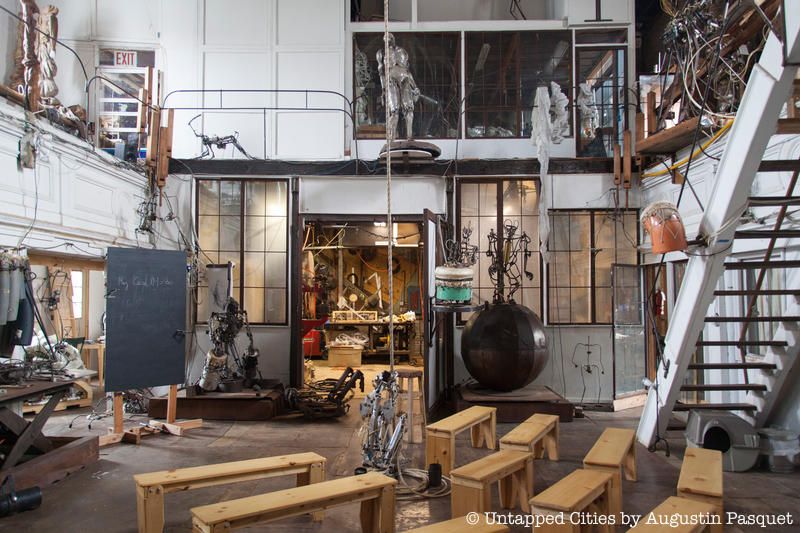
Inside the former Norwegian Seamans Church in Red Hook is a site-specific installation and workshop called the Robotic Church, which functions as the workshop for Amorphic Robotic Works. The ARW is a collective of artists, engineers, technicians, and programmers founded by Chico MacMurtie, who is known for his large-scale kinetic sculptures. In the Robotic Church, 50 “humanoid performers” are positioned throughout the former church nave with a control tower up top. The computer-controlled pneumatic sculptures express themselves through rhythm and body language, programmed to beat, strum, vibrate, spin, and play their own bodies.
The collection traces the evolution of MacMurtrie’s first robotic sculptures from the late 1980s, including “Tumbling Man” and “Drumming and Drawing Subhuman,” to advanced ones with more refined movements such as “Urge to Stand” and “Transparent Body.” These 50 are part of MacMurtrie’s/ARW’s “Society of Machines,” which comprises over 250 individual sculptures. The robots range in size from twelve inches to fifteen feet. The Brooklyn studio is also where works are developed, including Border Crossers, lightweight robotic sculptures that can extend over borders including the U.S-Mexico border.

Fort Defiance in present-day Red Hook was one of the forts that General Nathanael Greene constructed to defend New York. It was the westernmost fort along Brooklyn Heights defending Upper New York Bay from the British. The fort was built in just one night prior to the Battle of Long Island, the largest battle of the Revolutionary War. Cannons from the fort shot at two ships, the Phoenix and the HMS Rose, but were unsuccessful in stopping the British ships from bombarding the city.
Some said that the U.S. began at Fort Defiance since it was the first fort to see battle after the signing of the Declaration of Independence. The fort complex contained three redoubts connected by trenches. Those at the fort defended it from the HMS Roebuck on the morning of the Battle of Long Island. The fort was abandoned after the war, and the fort is commemorated by a plaque in Valentino Park. A part of Red Hook Lane, a strategic spot for colonists near Fort Defiance, is still named so today in Downtown Brooklyn.
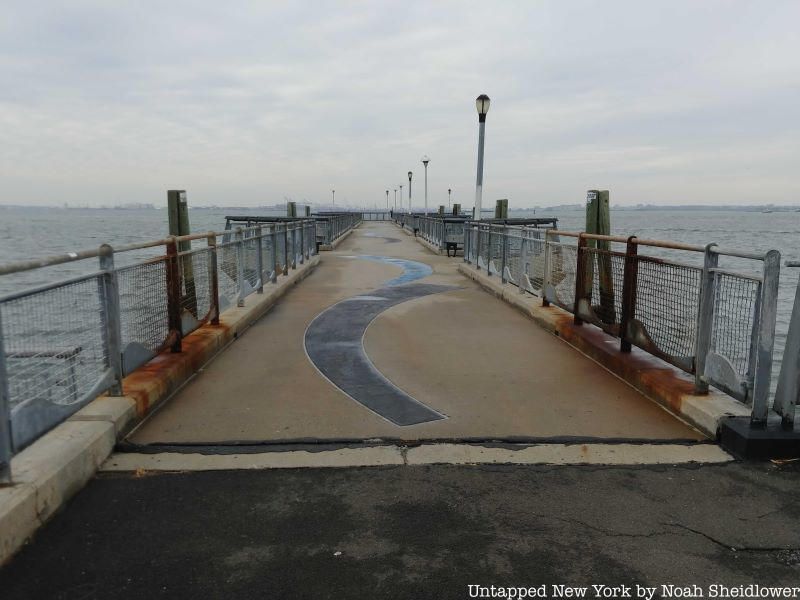
From various points in Red Hook, visitors have access to the only front-facing views of the Statue of Liberty in New York City. The statue was oriented to face France, which gave the U.S. the statue. Louis Valentino, Jr. Park and Pier, named after a neighborhood firefighter and lifeguard, gives visitors the chance to view the famed sculpture straight on.
The Pier 44 Waterfront Garden is another spot that offers frontal views of the Statue of Liberty. The park is home to The Waterfront Museum and is located near legendary spot Steve’s Authentic Key Lime Pies. The IKEA ferry, which takes shoppers from Manhattan to the Red Hook flagship store and back, also offers clear views.
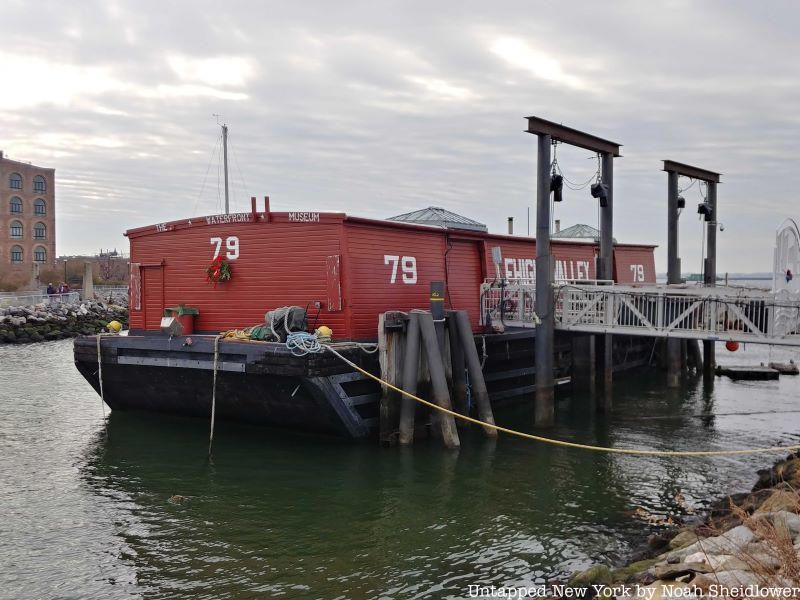
The Waterfront Museum in Red Hook is currently operated on a Lehigh Valley Railroad barge that moved goods across the Hudson River. The barge, which dates back to 1914, is often considered the only all-wooden vessel built between 1860 and 1960 still afloat and accessible. Arthur Miller premiered one of his plays called The Hook at the barge, which is located at the foot of Conover Street.
The museum was established in 1985 by David Sharps, who relocated it to the barge in 1994. The museum hosts exhibitions and special events, and it is only open on Saturdays from 1 p.m. to 5 p.m. and Thursdays from 4 p.m. to 8 p.m. Visits include a look at the Captain’s original living quarters, the tools used by longshoremen, and the gongs and bells of the tug and barge system.
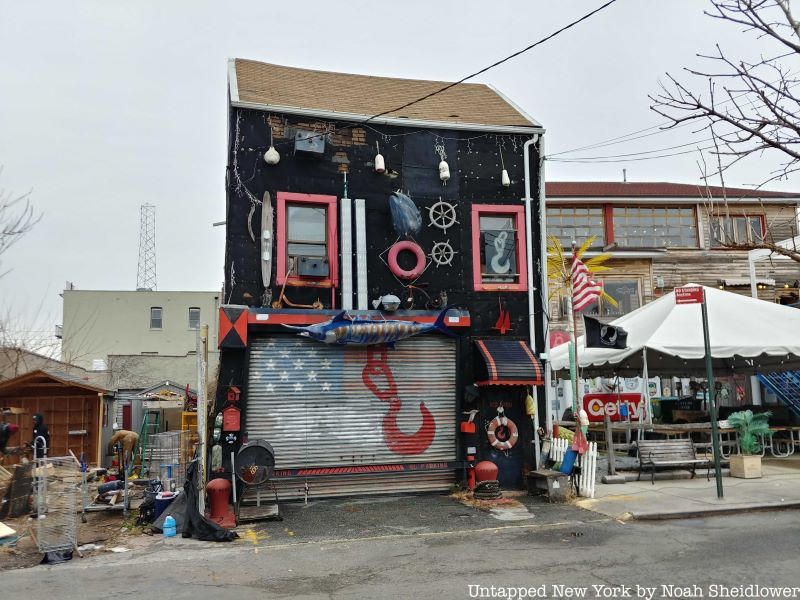
Throughout the neighborhood, local businesses and residents display red hooks on their doors, which make for an unofficial scavenger hunt. The Dutch settlers who arrived in 1636 called the area Roode Hoek, which means “red point” due to the red clay soil. These red hooks can be found on the neighborhood’s historic structures, including warehouse-style buildings, row houses that were the homes of longshoremen and shipyard workers, and federal-style buildings.
One spot in Red Hook to see more than just red hooks is 26 Reed Street, whose black and red exterior displays life preservers, buoys, ships’ wheels, an anchor, a spray-painted fiberglass swordfish, and a handmade replica of the World Trade Center Towers.
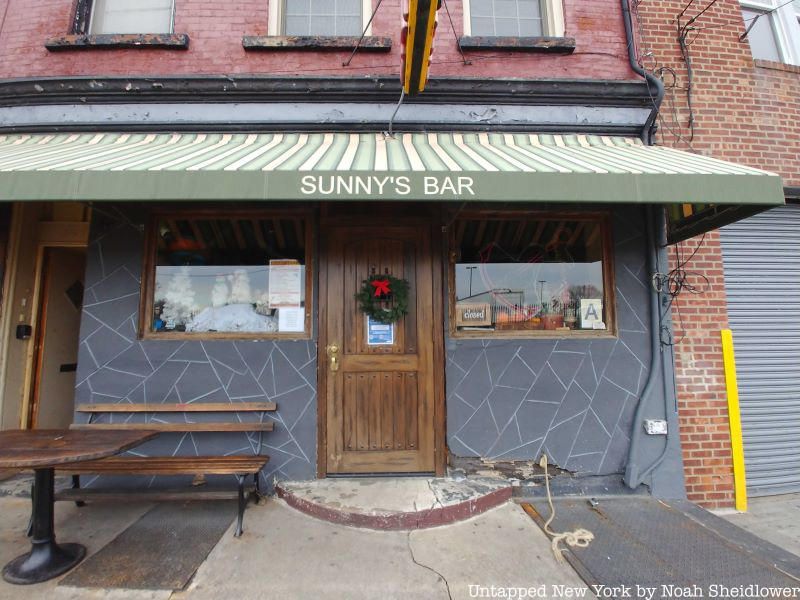
Sunny’s Bar is one of the city’s last remaining longshoremen bars, even though few longshoremen go anymore. The space first opened as John’s Restaurant and Bar, where longshoremen would unwind after work. The bar, though, became a spot for the local artsy residents as the community declined during the 1980s and shipping was long gone. Sunny’s then took on the name Red Hook Yacht and Kayak Club, where customers tracked their own tabs and purchased drinks with a $3 “donation.” It was shuttered in 2001, though, as it sold liquor without a license.
Sunny Balzano, the bar’s proprietor and namesake, worked to get the bar back up and running alongside some community members. Many interior knick-knacks remained untouched when Sunny’s Bar opened. The bar served as a music venue and an art space, over the years attracting locals old and young as well as outsiders. After suffering damage from Hurricane Sandy, the community banded together and helped finance repairs.
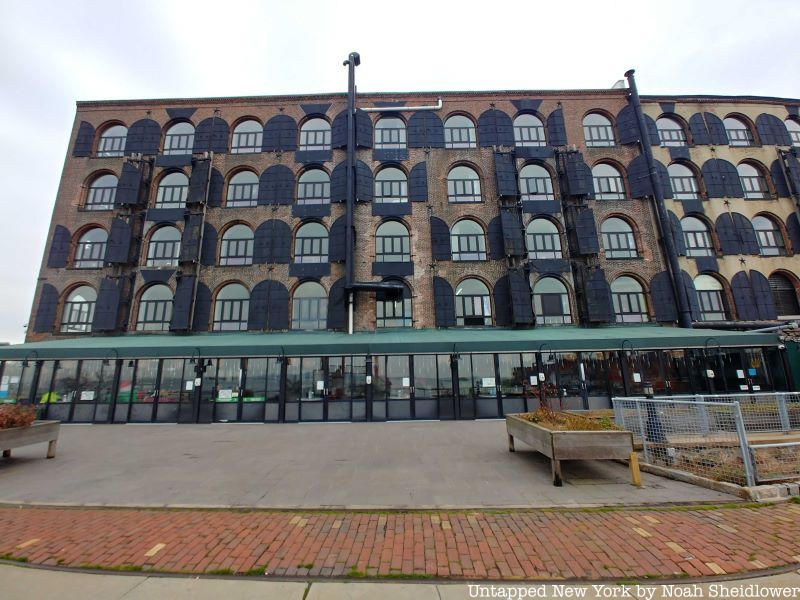
Look North Gallery is perhaps New York City’s only art gallery specializing in Inuit art. The gallery was founded in 2006 by Jim Clark, who traveled and worked in Arctic communities for over 25 years as a ship captain. The gallery is located in a renovated Civil War-era building that was once a former shipping warehouse.
The gallery offers sculptures of shamans, mythological figures such as Sedna, owls, throat singers, polar bears, birds, and other figures. Prints by Inuit artists, including Kenojuak Ashevak, are also for sale. Clark has curated a diverse collection of both traditional and contemporary works.
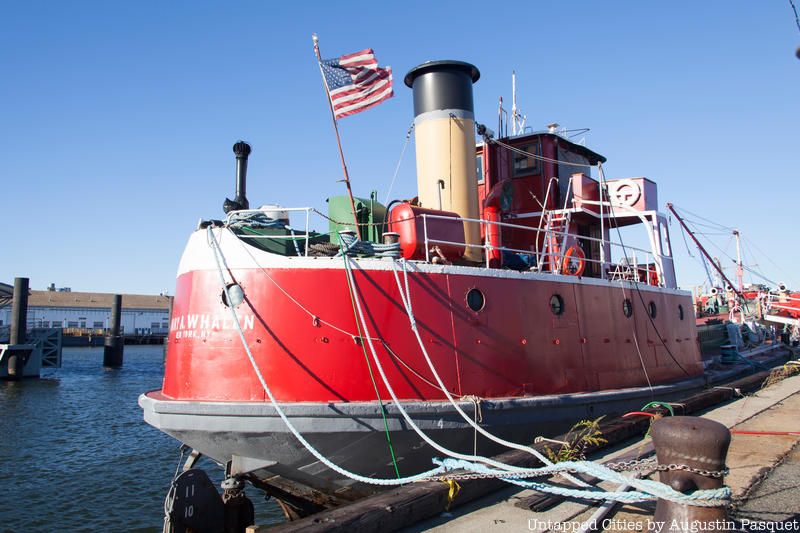
The Mary A. Whalen, one of the neighborhood’s only sites on the National Register of Historic Places, is a historic oil tanker built in 1938. The boat was in active service until 1994 and shipped fuel products along the East Coast. The “bell boat” is 172 feet long and is the home of the non-profit PortSide NewYork, which connects New Yorkers to the potential of their waterfront. The tanker was also at the center of the 1975 Supreme Court case United States v. Reliable Transfer Co. in the subject of maritime law.

The Red Hook Houses is the largest public housing complex in Brooklyn, completed in 1939 and designed by architect Alfred Easton Poor. The houses are populated by over 6,000 residents, making up a significant portion of Red Hook’s population. Mayor Fiorello LaGuardia and Commissioner Robert Moses applauded the homes, originally built for longshoremen and dockworkers along with their families. Social realist artist Marion Greenwood was commissioned to design the original murals for the 30 residential buildings.
Los Angeles Lakers player Carmelo Anthony and author James McBride lived in the homes. Despite investigations into drug sales, the houses were major cultural centers in the community, especially during its decline in the 1980s and 1990s. Life magazine even named Red Hook as one of the “worst” American neighborhoods and “the crack capital of America.” Due to damage from Hurricane Sandy, FEMA promised the houses $560 million, and repairs such as a flood barrier are still underway.
Next, check out 11 Revolutionary War Sites Across NYC!
Subscribe to our newsletter